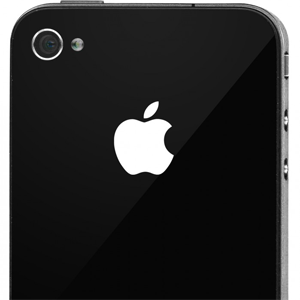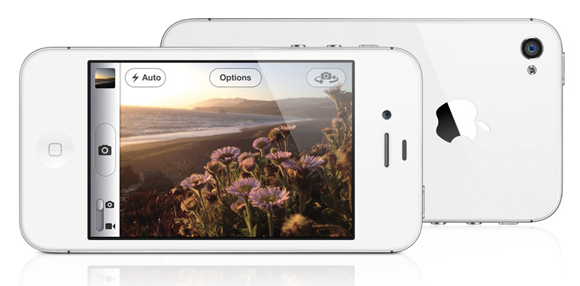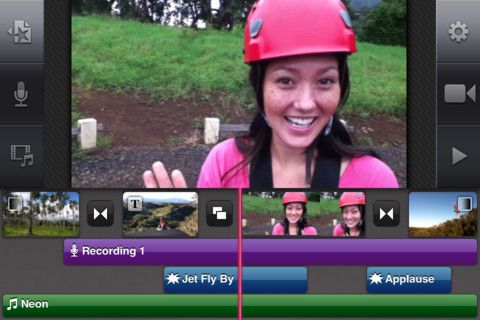Shooting a film on an iPhone might not seem like the smartest idea, but for many it’s a viable option for capturing decent HD quality video on the move. Monday’s Stuff to Watch featured a number of productions created using the iPhone, a few specialised apps and some extras which can really make the difference.
Today we’ll be exploring the iPhone filmmakers’ toolbox, more specifically the apps that can help you get the most of your phone’s capabilities as a video recorder, processor and editor. Tomorrow we’ll be taking a closer look at accessories, DIY kit and techniques for producing top-notch video on your smartphone, so be sure to check back.
The iPhone & Video
The iPhone 4S, being the latest and greatest, will provide a superior video experience than the iPhone 4. Just so we’re straight, the iPhone 4 shoots decent raw 720p video, while the iPhone 4S can capture 1080p video. The iPhone 4S also has an inbuilt image stabiliser to reduce hand shake, and low light performance is noticeably better than its predecessor.
That said the iPhone 4 still provides good 720p HD video, and the lack of an image stabiliser won’t make too much of a difference with the right tools at your disposal. If you are considering using an iPhone to shoot your short, film, documentary or music video, then battery life and storage space are going to be of utmost concern. It goes without saying that you should probably dump existing footage and pictures to your Mac or PC, for the maximum shooting time possible.
If you’re expecting to be out in the field for a while it might be worth investing in a powered iPhone case, for example the Mophie Juicepack Air which will provide more power for more shooting. The best way to overcome battery issues is to use multiple devices, so if you’ve got a couple of iPhones amongst your crew; you should be set for a day of filming.
Lights, Camera... Apps!
Camera, your phone’s default capturing app, is remarkably basic. You can set exposure and focus (though not independently) by tapping and holding on an area in the viewfinder, but that’s about it. If you’re going to get serious about filming, you’ll probably want to check a few of these out.
FiLMiC Pro ($3.99)
Probably the most fully-featured iPhone video app, FiLMiC Pro lets you customise a myriad of options from a thumb-optimised interface for the best video possible. In addition to three separate modes for focus and exposure (including the ability to expose for one area and focus on another), FiLMiC Pro allows you to specify your own frame rate, including 24p (US) and 25p (European) film standards and user-defined video bitrate for unsurpassed authenticity.
The app also provides control over the resolution of the resulting video and framing guide overlays in 4:3, 16:9 and 2:35.1. An on-screen audio meter ensures you can see whether your sound is too loud or quiet and color bars and a film-style clapper finish off this motion picture masterpiece.
It’s not perfect, the iPhone drops frames occasionally (especially in low light situations) and 24p might end up at around 18 frames at times, but then again it offers such a leap in functionality over the plain old Camera app that the $3.99 seems almost too cheap considering the resulting footage. Check out the demo (in HD), below.
[embed]http://www.youtube.com/watch?v=oQZSC-d0oSc[/embed]
almost DSLR ($1.99)
This is a good alternative to FiLMiC Pro, though it does lack a few features which is reflected in the slightly cheaper price tag. The app lets you specify video quality, set focus and aperture settings and lock white balance. It also provides grid overlays for framing and the option to force constant flash.
It doesn’t contain an option for 24p video (no custom frame rates at all in fact) or high bitrate recording, two features which FiLMiC Pro handles with ease. Unlike the previous app, however, almost DSLR doubles as a still camera which might provide further functionality outside of your movie making habit.
[embed]http://www.youtube.com/watch?v=29HnzX0APAg[/embed]
Movie Looks HD ($1.99)
Red Giant make software that colour grades video footage for Hollywood productions for use with professional-level desktop editing software. Known as Magic Bullet Looks, the software usually retails for $399 and has been used extensively in the movie industry since 2001. Now there’s an iPhone version that provides similar results for a measly $2.
Put simply, it’s awesome. By downloading this you’re buying into the best processing app for the iPhone bar none. In addition to multi-layer colour grading, the app renders remarkably quickly and allows good control over the strength of each effect. One limitation is that videos must be under 5 minutes in length to be imported, but you can always trim your larger clips down to size and re-edit them later. Results below!
[embed]http://www.youtube.com/watch?v=G9rPefwGkYw[/embed]
SloPro (Free/$1.99)
If you have an iPhone 4S then you’ll be delighted to know that you can shoot video at 60 frames per second, double that of the iPhone 4. Why is this so cool? Thanks to a free-to-try app called SloPro, you can then play these videos at half-speed for some silky smooth slow motion footage.
The app is free to download and try, but if you’d like to export your video to Camera Roll and beyond you will need to pay the $1.99 in-app purchase fee to upgrade to the professional version. Again, this won’t work too well on an iPhone 4 or below (unless you’re fond of 15fps video) but on an iPhone 4S it might add that final rush of cinematic goodness to your production. Process your results with Movie Looks HD for colour graded, slow motion awesomeness.
[embed]http://www.youtube.com/watch?v=BCtCD0TxKzY[/embed]
iMovie ($4.99)
Apple’s own home movie editing app has been around for a while now, and initial reviews weren’t too favourable. A couple of updates later, however, and iMovie seems to have improved as a basic editing tool. It’s not for everyone - if you’re making a music video, feature-length production or documentary style film you will probably want to use a desktop app. For short films and productions though, iMovie is a remarkably fast way of editing together your footage.
The ability to export your project to iMovie for Mac is awesome, allowing you to play around with footage on the go and then pick it up when you get home. There are also a plethora of effects, sound effects, musical scores and the ability to build cinematic trailers from your footage too.
Conclusion
Armed with these apps you’ll find your abilities as an iPhoneographer (I still hate that word) are improved, though sound quality and camera shake still leave a lot to be desired. That’s what tomorrow’s article is all about - steadying your shots and getting the most from your audio.
Have you used any of these apps? What did you think? Any advice or alternatives? Have your say in our comments, below.



